Quantum Marketing – Physical Approach to the Intangible Notion
Did you like physics at school or all those obscure terms merged into monotonous mumble similar to lullaby and made you yawn all the time? I promise you to avoid the tedium as we are going to peep under the fold of the common marketing practices, which will let you look at the matter in a different way and maybe make some tweaks to boost your efforts.
So what's a quantum theory and how is it connected to marketing? To put it short, it's a theoretical basis of modern physics that explains nature and behavior of matter and energy on the atomic and subatomic level.
Does this definition resemble you what's being said about internet marketing?
Internet marketing, or online marketing, refers to advertising and marketing efforts that use the Web and email to drive direct sales via electronic commerce, in addition to sales leads from Web sites or emails.
In other words, Internet marketing is a theoretical basis of tactics and techniques that explain nature and behavior of consumer and energy marketer needs to spend to sell anything. Do you see any similarities in the definitions yet? Great, then I’ll continue.
Quantum theory has two fundamentals: an observable and a state.
An observable - is a measurable operator, or gauge, where the property of the system state can be determined by some sequence of physical operations. In marketing an observable is our product that we are trying to promote.
A quantum state refers to the state of an isolated quantum system. Knowledge of the quantum state and the (deterministic) rules for its evolution in time exhausts all that can be predicted about the behavior of the system. In plain English, a state is an abstract idea indicating a multitude of stable values of variable object characteristics. In marketing those are metrics.
And now, attention please, meet the observer, a “VIP” thanks to who the process acquires more or less intelligible form. The observer possesses high-accuracy devices allowing to understand the state of an observable.
So why do we mix quantum theory with Internet marketing?
Both concepts have much in common, each of them has great amount of metrics and variables that enable observer get easy to read number.
Let’s view some examples:
Quantum Physics and the Hamiltonian
One of the central problems of quantum mechanics is to calculate the energy levels of a system. The energy operator, called the Hamiltonian, abbreviated H, gives you the total energy. Finding the energy levels of a system breaks down to finding the eigenvalues of the problem
The eigenvalues can be found by solving the equation:
Quantum Physics and the Heisenberg Uncertainty Principle
In quantum physics, you encounter the Heisenberg uncertainty principle, which says that the better you know the position of a particle, the less you know the momentum, and vice versa. In the x direction, for example, that looks like this:
where Dx is the measurement uncertainty in the particle’s x position, Dpx is its measurement uncertainty in its momentum in the x direction, and
This relation holds for all three dimensions:
The same thing happens at marketing. We can never know exactly where is our client, but we can make approximate calculations using tools like AdWords and similar.
Quantum Physics and the Schrödinger Equation
When a quantum mechanical state can be described by a wave function,
then this is a solution of the Schrödinger equation, which is written in terms of the potential
and energy
like so:
The Schrödinger equation work in three dimensions as well:
Spin Operators and Commutation in Quantum Physics
Don’t think quantum physics is devoid of anything but dry science. The fact is that it’s full of relationships, they’re just commutation relationships — which are pretty dry science after all. In any case, among the angular momentum operators Lx, Ly, and Lz, are these commutation relations:
All the orbital angular momentum operators, such as Lx, Ly, and Lz, have analogous spin operators: Sx, Sy, and Sz. And the commutation relations work the same way for spin:
Quantum Physics and the Compton Effect
In quantum physics, you may deal with the Compton effect of X-ray and gamma ray qualities in matter. To calculate these effects, use the following formula, which assumes that the light is represented by a photon with energy E = hu and that its momentum is p = E/c:
Source: Quantum Physics For Dummies
Below you will see the examples of the most common marketing metrics. If you are a smart online merchant/blogger, you might be tracking their results regularly. Most of people doing business online rely on their calculations as they have solid mathematical background and we got used to believe that scientific approach is the most accurate one.
Marketing ROI
ROI or Return on Investment is considered to be one of the most important metrics for marketers. It’s pivotal to know how the effort and money we’re investing into our marketing campaigns is affecting our bottom line.
Marketers all over the world argue about whether they should use sales revenue or gross profit (or gross margin) as the structure for calculating their ROI. Here is a traditional formula to calculate ROI:
Do you use it? Or maybe you believe that using sales revenue overstates your ROI since you are not taking into account the cost of goods sold (COGS). So you use gross profit for your marketing ROI metric. Let me remind you that Gross profit is your company's revenue minus its cost of goods sold (COGS). This is a different value than operating profit, which takes into account overhead and payroll, and is your earnings before interest and taxes.
So, here is one more formula to calculate ROI:
And finally we come to the formula that marketing ROI is:
Marketers must keep in mind marketing ROI of their activities. In fact, any company is a kind of machine for making money. Its managers care about how much is going in and coming out. Break down your marketing by activities or channels, identify what brings the most return for your investment and you’ll get a scope of how your activities are individually contributing in your marketing strategy. This will allow you to decrease or increase investment in specific efforts accordingly.
Here is a quick example to clarify things even more for you. Over the past 6 months the company has spent $5,000 on freelance writers for blog posts. These posts brought in 150 leads, converting at a rate of 10%, generating 15 customers. These 15 customers had an average order size of 800 items. Our items have a COGS of $1each, and sell for $2.50.
(15 orders * 800 items * $2.50/item) - (15 orders * 800 items * $1/item) = $18,000
(Gross Profit - Marketing Investment) / Investment = Marketing ROI
($18,000 - $5,000.00) / $5,000.00 = 260%
Our marketing ROI is 260%, which means that for every dollar we spent on freelance writers for our blog, it brought a return of $2.60. Not bad. Maybe it’s worth to increase expenditures to drive more revenue. Even if the returns will diminish, there is still growth to expand with a marketing ROI of 260%. Using closed-loop marketing software, it’s easy to identify which sources specific leads come from.
Marketing Expense to Revenue
Marketing Expense to Revenue is a similar metric to Marketing ROI. It is useful for Marketing Manager or Director as shows the overall allocation of their department in respect to overall revenue generated. This metric demands focus on total marketing expenses, including salaries of the marketing employees. It shows how much you're spending on marketing compared to how much revenue is generated by the company.
Marketing Expense to Revenue is calculated as follows:
For instance: in Q1 2011 Google's Marketing and Sales expense was $1.01 billion, and their revenues were $8.58 billion. This makes for a marketing (and sales) expense to revenue ratio of 0.12. Please note that marketing expense to revenue ratio can vary widely in different industries and companies based on growth goals and gross margin.
Customer Acquisition Cost (CAC) or Cost of Customer Acquisition (CoCA)
There are a number of ways to calculate CAC. You’d better split up CAC by channel, so you can clearly see the direct costs of acquiring a customer from each of the channels your company focuses on.
This metric could be calculated over any time period: a month, a quarter, or a year. Total Sales and Marketing cost is all the program and advertising spend, plus salaries, plus commissions and bonuses, plus overhead.
Supposing we spent $500,000 between our sales and marketing teams last quarter, and acquired 50 new customers. This would calculate to a CAC of:
Conclusion: the cost to acquire each customer last quarter was $10,000 per customer.
CAC is an essential metric to have as it serves as a base for the next two metrics covered below. Both of them are critical for business: Time to Pay Back CAC and LTV:CAC.
Time to Pay Back CAC
This metric tells you the number of months it takes your company to earn back the CAC you spent to get a new customer. Please note that if your customers pay one time upfront, this metric is not necessary as it should be 0, i.e. the customer’s upfront payment is greater than CAC. If not, then you are losing money on every customer.
If you are running a business where customers pay a monthly or annual fee, it is best to aim for Payback Time to be under 12 months. To put it simple, if you break even on a client after 12 months, you start making money from the customer from then.
Here’s how you can calculate Time to Pay Back CAC:
As I have already said above, this metric will give you the number of months to payback. Expenses Per Month for the Average Customer is how much money you spend directly servicing that customer: COGS + services like training and support.
We’ll use our $10,000 CAC figure from the previous example, and calculate the Time to Pay Back CAC. Let’s assume that our average customer has a monthly revenue of $1,200, costing us $250 per month in COGS and $300 per month of a combination of technical support and training, totaling $550 in Expenses Per Month for the Average Customer.
= 15.38 months. Did you get it? If we pay $10,000 to acquire a customer, we will break even and start to make money on the customer about 15 months later. The number is a bit higher than we should be comfortable with for a SaaS business, because keeping a customer signed on for a minimum of 15 months can be challenging. Of course it depends on the competitiveness and necessity of your product in your industry.
It's critical to evaluate churn rate for businesses where customers pay monthly or yearly. If your average customer sticks around less than your Time to Pay Back CAC, you’re in trouble because you’re operating at a loss or will be very soon. There are two ways to improve the situation: you may reduce your CAC, or increase the average number of months a customer sticks around. You may also think about increasing the price of your product, or decreasing expenses associated with an average customer.
LTV: CAC
This is another important metric to calculate for your business. We won’t go deep into details of calculating LTV (Life Time Value) as it’s a lengthy and industry-specific process. I’d like to just briefly refer to the importance of your LTV: CAC ratio.
Here is how you can calculate your LTV: CAC ratio:
We guess it’s worth mentioning that the connotation behind your LTV: CAC can mean life or death for your business in the long-term. 3X CAC is viable for most SaaS, or other forms of recurring revenue, businesses. However, most public companies like Salesforce.com, NetSuite, etc. have multiples that are more like 5X CAC.
Average Lead Close Rate
The metric evaluates the health of your funnel from the top to the bottom. There are no businesses with perfect funnels, and it's useful to look at your funnel regularly to encourage activities that will give it a nudge in the right direction.
You can calculate an Average Lead Close Rate for a given month as follows:
If your Average Lead Close Rate is low, you might be not too good at qualifying your leads. Your sales team might be wasting time calling leads that are unqualified. If it’s high, you are on the roll. Your leads are highly qualified and being converted into customers. If your database is growing at the same rate and with the same quality of leads, it should turn into more customers. With a high Average Lead Close Rate, your marketing team should focus on increasing the number of leads coming in from the top of the funnel.
And now, a little bit of math. Let’s say we had 3,000 leads in March, which converted to 25 customers:
That comes out to 0.83%, which means that 0.83% of our leads became customers. If we flip the equation (3,000 leads/25 customers = 120), we can find that for every 120 leads that enter the funnel at the top, we get one customer. It’s difficult to say if this number is high or low because it depends on the industry and particular business goals. Besides it’s important how you are attracting your leads. For inbound marketing tactics where your leads are coming to your website organically, this number isn’t bad. But if you’re paying for every lead, this could become expensive soon depending on how much money a new customer nets your business.
For companies whose sale cycle is more than 6 month, this metric can become untrustworthy. This is due to the fact that if you were generating 100 leads per month a year ago and 10 of those leads closed today, but today you're receiving 1000 leads per month, the close rate looks like 1%, but it's really closer to 10%. Use closed-loop marketing software to track lead close rates based on the month they were generated.
Net Promoter Score (NPS)
NPS is a customer loyalty metric developed by Fred Reichheld. It is commonly used in customer satisfaction research. Many organizations, including HubSpot, use Net Promoter Score to assess the happiness of their customers.
They send an NPS survey to a group of randomly selected customers every quarter to benchmark their relationship with customers. For instance, an NPS survey simply asks: How likely is it that you would recommend our Company to a friend or colleague?
The division of responses may be as follows: Customers who answer 0-6 are “Detractors”, 7-8 are “Passives,” and 9-10 are “Promoters.” The goal is quite understandable: to maximize the number of Promoters.
Having these numbers you can calculate NPS as:
At HubSpot, when surveying their customers about promoter score, they also have an open-ended question for them to explain their thoughts. They have a “Reason for Response” field to get a qualitative reasoning from their customers for their score, which can often provide actionable feedback for the team to make improvements.
You should know about several criticisms of Net Promoter Score as a customer loyalty metric. Most criticisms revolve around it being used as a be-all metric for customer satisfaction and loyalty. The truth is that NPS is used as a snapshot into your customers’ thoughts about your company, and the products or services it provides. And it should not be the sole metric that your entire company revolves around to determine your customers’ opinions of your business, but it is a great way to assess how you're faring if you monitor the metric continually.
Source: HubSpot
Do all those formulae give you an illusion of safety and stability? Do they really work for your company? It’s great if they do, so please forgive me for the fly I am going to put in the ointment. I am sure that there are lots of people who impugn everything and always want to cut down a little bit further. In case the thought to query the above formulae has never crossed your mind, the reasoning that follows this preface might shake your confidence.
- Number of visitors (traffic)
- Number of new visitors (after the campaign)
- Regular number of new visitors vs the increase after the campaign
- Number of return visitors
- Number of return visits from the new traffic
- Quality of traffic
- Is this the traffic that contributes most to the goals
- Referring traffic
- Traffic to the site through different channels because of the content
- The pages the visitors are going to when they come in from the campaign
- Number of shares
- Number of likes, tweets, +1s, diggs, stumbles, upvotes, etc. on social platforms
- Number of Facebook fans
- Number of Twitter followers
- Number of views your video gets on Youtube
- Number of views on Slideshare or any other content sharing platform
- Search engine traffic for your website before and after campaigns
- How many page views
- How many people did we reach – audience size
- Number of RSS readers or subscribers
- Number of times the content was viewed (on the same or different platform)
- Webinar participants
- Share of voice in the different channels for industry terms
- How does it compare with competitors
- Number of Facebook fans
- Number of Twitter followers
- Number of @mentions in Twitter
- Number of blog citations
- Number of trackbacks
- Number of pingbacks
- Number of backlinks
- Brand mentions via Google alerts and other monitoring tools
- How many formats
- Number of platforms the content goes into
- Number of keywords you are ranking for before and after
- Search engine results for your website and individual content pieces before and after the campaign
- Number of times the content was downloaded (book or report)
- Number of registrations for email/opt-in/webinar/teleseminar
- Number of comments on the content (discussion)
- Number of clicks on the hyperlinks
- Open rate (in case it was an email)
- Sentiment of the comments or mentions
- Traffic to other pages the content pages on the site drove
- Number of subscribers and repeat visitors which resulted in sales
- Are these sales bigger than the normal sales?
- How many goals accomplished normal vs new
- Number of downloads
- Direct results / Sales / Economic value / Purchase
- Number of goals were accomplished
- Number of sales
- Number of leads
- Size of the orders
- Number of repeat orders
- Comparison of old page views vs the page views for the campaign
- Time visitors are staying on the page or website
- Comparison of time spent on website vs new comparison
- The top landing pages for the content campaigns
- The conversion rate of the landing pages that traffic brings in
- Bounce rate
- The pages they are leaving the website at
- Length of visit on your blog, site and other online touch points
- Cost of the content
- Time it takes to do the content
- Internal cost
- External cost
- Cost to promote the content
- Product fulfillment cost
- Cost of project
- Cost of sale
- Cost of acquiring a customer
- Revenue per reader
- Cost per reader
- Profit per reader
- Conversion rate (from visitors to leads)
- Conversion rate (from leads to sales)
- Which are the top converting content pieces
- Dollar value of each piece of content
- ROI (Return On Investment) for content creation and content marketing projects
- Profit of project
- Number of sales or leads
- ROI of the project
Do you take into account all the above metrics to measure your marketing success? Sometimes this occupation can become really cumbersome, isn’t it? But what about quantum marketing approach? Is it easier and more accurate? To tell you the truth, with so many variables it becomes impossible or almost impossible to work out an efficient marketing strategy and assert that will be efficient for any company, be it a brick factory or a software store. There are oceans of blog posts out there and all of them are ready to provide you with “5 working marketing tips” that will make you a millionaire overnight. Don’t try to BS us! There is no one size fits all marketing strategy. If something works out well for your company today, that doesn’t mean that the same thing will bring you profit the next day as the conditions are changing in double quick time. I even don’t speak about mass solutions. And quantum marketing only proves this statement.
Quantum marketing itself is the totality of approaches to identification of the most coherent methods of product promotion. The hypothesis of quantum marketing are being built on the conviction that only the whole set of techniques will help to get the result, not one or two tactics (i.e.: quantum marketing grounds on the fundamentals of quantization). Here we see the endeavor to explain what works in marketing thanks to the composite combination of factors without reducing everything to one or two that are quasi decisive. Instead of explaining companies’ success by their beneficial positioning or excellent product quality or the right moment of entering the market and so on, quantum philosophy analyzes all vital causes and their mixes for the purpose of recycling the effect of reaching favorable outcome.
Let’s revise the basic logic of quantum marketing and draw up its 5 dominant rules:
The logic: "If something has worked for somebody else that does not mean that it will work for you by all means".
Quantum marketing unlike the other ones doesn’t offer any ultra-modern mean of promotion that ran well for two or three companies. It’s essential to understand that it is the first attempt to comprehend all mediums of promotion and realize when they work and when they don’t. The cardinal conjecture of quantum marketing is that there exist patterns that are not connected to such notions as “creativity” or even “positioning” at all, however they are considered as the ones that define the success of marketing campaigns. Thereby, the general logic of QM offers to take a broader look at marketing.
5 Rules of quantum marketing
- Phases
- Means and messages
- 5 rules of advertising
- The program of communication
- Feedback
It’s necessary to identify the phases of market and product development before specifying any marketing actions.
Each phase of market and product development has its own means of promotion and leading ideas of advertising messages.
Following the rules of advertising you significantly increase your chances for success.
Any communication with the customer should be guided by corporate program of communication.
Nothing will save your money on advertising like the appropriate feedback.
Conclusion
As you see quantum marketing is not something brand new and trendy at the moment, so it is not likely to disappear tomorrow. What did I want to tell you by comparing quantum physics and marketing, typing all those formulas and listing all those variables? Just aimed to make you discredit the common marketing practices, experiment, take into account more factors/variables, work out your own formulae and test them every now and again. I am sure; you will draw your own miraculous formula of success that considers namely your business specifications in the end.
My respects to those who have read this blog post from cover to cover. Do you feel like discussing its contents? Have you heard about quantum marketing before? Do you agree with its logic? Have any questions, thoughts or suggestions? They are welcome at the comment section as well as your likes and shares.
Get more to your email
Subscribe to our newsletter and access exclusive content and offers available only to MonsterPost subscribers.



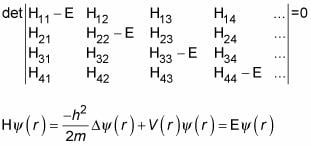







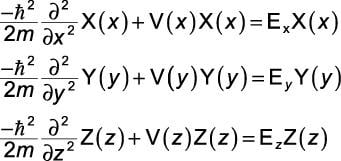
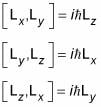
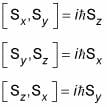
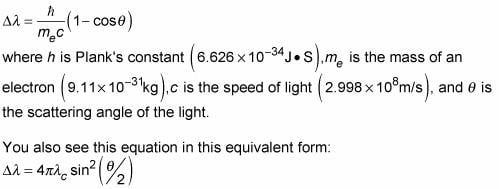
Leave a Reply
You must be logged in to post a comment.